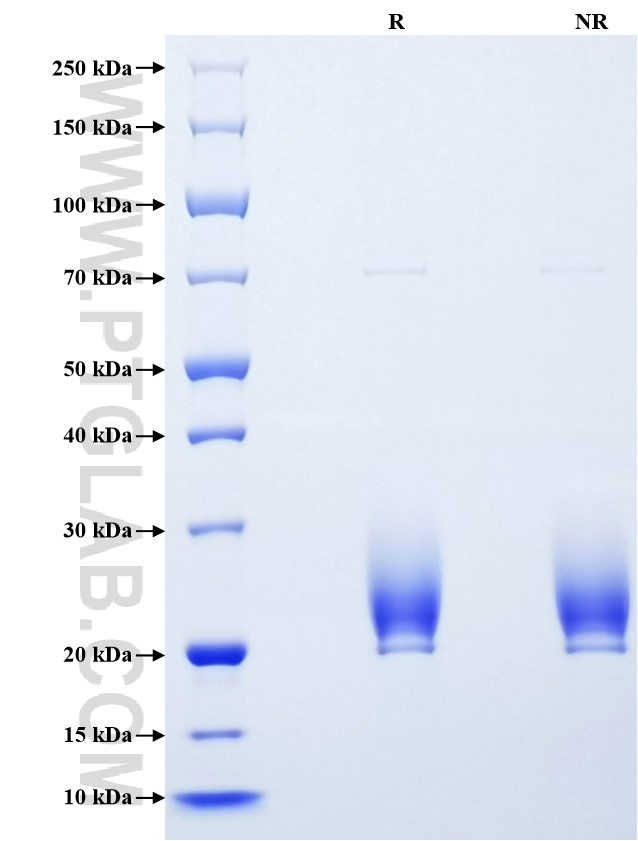Recombinant Human PTPRS protein (His tag)
种属
Human
纯度
>90 %, SDS-PAGE
标签
His tag
生物活性
未测试
验证数据展示
产品信息
| 纯度 | >90 %, SDS-PAGE |
| 内毒素 | <0.1 EU/μg protein, LAL method |
| 生物活性 | Not tested |
| 来源 | HEK293-derived Human PTPRS protein Val825-Leu1000 (Accession# Q13332-1) with a His tag at the C-terminus. |
| 基因ID | 5802 |
| 蛋白编号 | Q13332-1 |
| 预测分子量 | 19.2 kDa |
| SDS-PAGE | 20-28 kDa, reducing (R) conditions |
| 组分 | Lyophilized from 0.22 μm filtered solution in PBS, pH 7.4. Normally 5% trehalose and 5% mannitol are added as protectants before lyophilization. |
| 复溶 | Briefly centrifuge the tube before opening. Reconstitute at 0.1-0.5 mg/mL in sterile water. |
| 储存条件 |
It is recommended that the protein be aliquoted for optimal storage. Avoid repeated freeze-thaw cycles.
|
| 运输条件 | The product is shipped at ambient temperature. Upon receipt, store it immediately at the recommended temperature. |
背景信息
Protein tyrosine phosphatase receptor type S (PTPRS, also known as R-PTP-S, PTPSIGMA, and R-PTP-sigma) is an integral membrane protein. It can promote oligomerization by binding to large heparan sulfate proteoglycan structures, and interact with NTRK1/3, PPFIA1/2/3 (PMID: 25385546; 8524829; 9624153). The non-glycosylated molecular weight of PTPRS is 214 kDa, and the extracellular domain can be cleaved near the cell membrane by an endoprotease to generate a glycated 140 kDa protein. Variations and mutations of PTPRS are associated with Alzheimer's disease and cholangiocarcinoma (PMID: 38766183; 35991009).
参考文献:
1. Coles CH, Mitakidis N. Nat Commun. 11;5:5209(2014). 2. Pulido R, Serra-Pagès C, Tang M. Proc Natl Acad Sci USA. 5;92(25):11686-90(1995). 3. Serra-Pagès C, Medley QG. J Biol Chem. 19;273(25):15611-20(1998). 4. Poirier A, Picard C, Labonté A. bioRxiv [Preprint]. 12:2024.05.12.593733(2024). 5. Lertpanprom M, Silsirivanit A. Front Public Health. 1;10:835914(2022).
